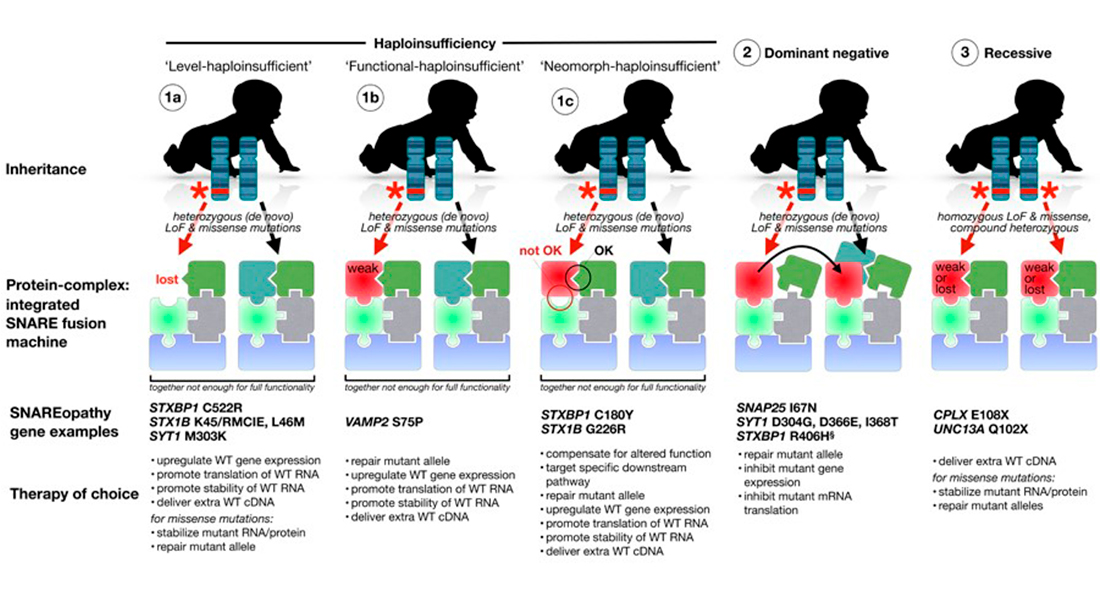SNAREopathies: new classification of syndromes based on mechanism
A position paper by Verhage & Sørensen published in Neuron on June 19 proposes to unify syndromes caused by mutations in eight core components of the synaptic secretion machinery, based on common etiology and mechanism.

The neuronal SNAREs and their key regulators together drive synaptic vesicle exocytosis and synaptic transmission as a single, integrated membrane fusion-machine. Human pathogenic mutations are now reported for all eight core components, but patients are diagnosed with very different neurodevelopmental syndromes: children carrying mutations in a single SNAREopathy gene can have >20 different diagnoses, depending on how they entered the health care system, a situation referred to as the diagnostic odyssey for the families/caretakers. A new functional classification, as SNAREopathies, provides key advantages to (1) delineate a clinical subgroup with a common pathogenic starting point, (2) end the diagnostic odyssey for patient families, (3) contribute to the elucidation of pathogenic pathways towards clinical neurodevelopmental phenotypes and (4) eventually to develop intervention strategies.
The position paper by Verhage & Sorensen defines SNAREopathies and charts the landscape of resultant neurodevelopmental conditions with its complexity in symptoms and disease mechanisms. The authors suggest explanations for the diversity in symptoms by considering (a) partial genetic redundancy, and (b) subtle differences in the cellular impact of mutations among different neurons in the brain. Investigating these suggestions will improve connections between disturbed molecular function of the synaptic secretion machinery and the diverse clinical symptomatology, and ultimately define outcome measures to evaluate future treatments.
